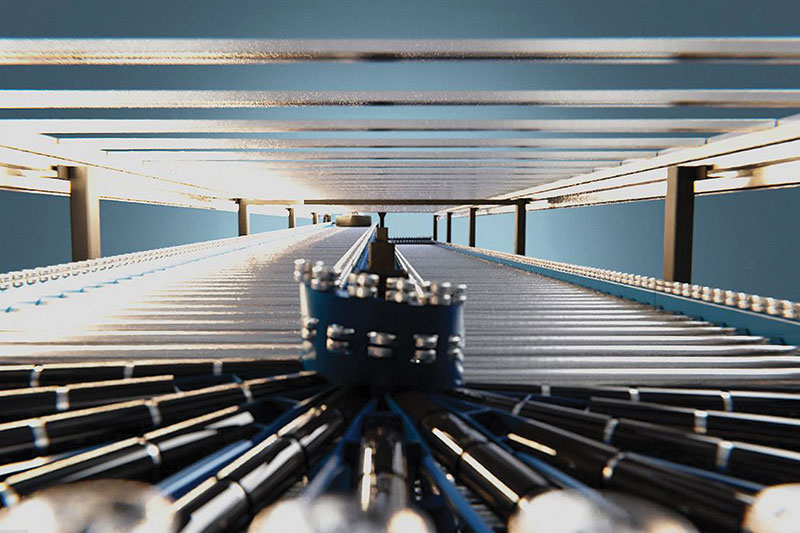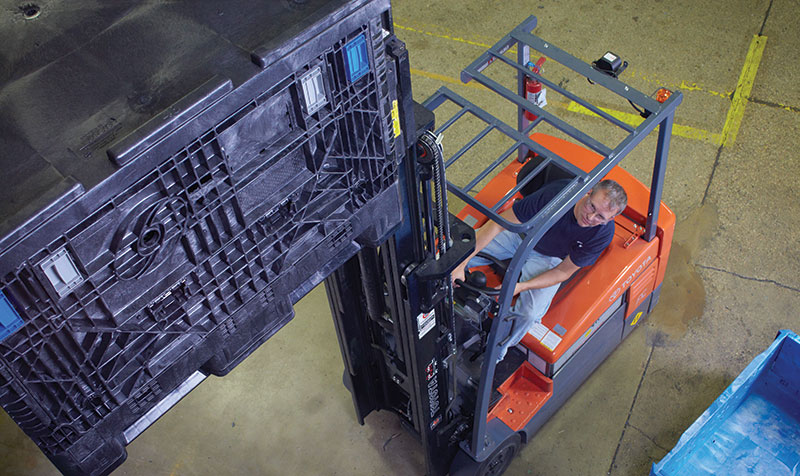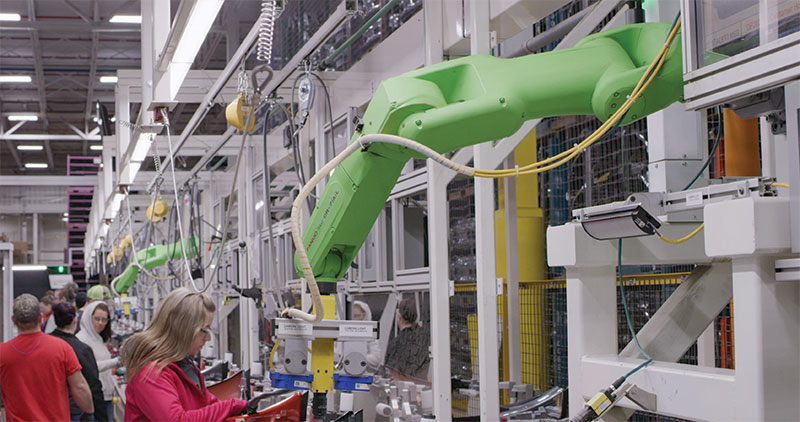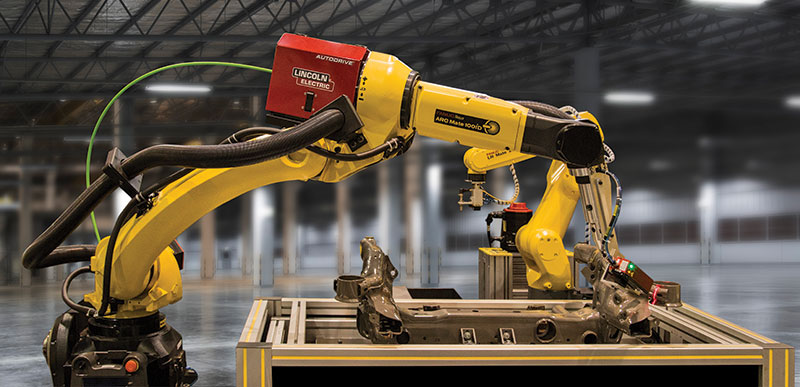Automotive: Staring down disruptions
The auto industry is learning to bob and weave as one disruption after another takes hold.

满足新需求的厂商和供应商有助教ken on a variety of creative formats, including motor-driven roller conveyor.
Latest News
Are your sourcing strategies ready for what comes next on The Rebound Podcast What’s happening with reshoring, nearshoring and labor rates on Talking Supply Chain Bosch Rexroth opens new factory automation Customer Innovation Center International, domestic pressure grows on trucking industry to reduce emissions Compliance Risk: A Significant Impediment to the Modern Supply Chain More NewsLatest Resource
Compliance Risk: A Significant Impediment to the Modern Supply Chain A comprehensive guide to compliance risks and pitfalls for modern supply chains.
A comprehensive guide to compliance risks and pitfalls for modern supply chains.All Resources
If you’ve been in the market for a new or used car over the past year, it’s not news to you that finding the car you want can be a challenge. Dealerships feature lots with plenty of empty spaces, and potential buyers often leave empty handed and frustrated, limping their aging vehicles along for another few months. Behind it all, myriad reasons, but the shortage of semiconductor chips remains the biggest issue automakers face, yet again.
Still, 2021 shook out slightly better than the prior year, with new vehicles hitting more than 15 million units sold, up 3.4% from 2020. Looking forward, no real relief is in sight until the second half of the year, according toCox Automotive.
Kacie Freeberg, senior director of industrial VST atOrbis Corp., says that if you look at North American light-duty truck sales, as an example, there’s a gap in demand and supply of around five million units. “The chip shortage continues to be the big driver, and all of the major automakers have had to slow down certain line speeds, cut shifts or reallocate chips to certain vehicle platforms,” she says. “It’s pretty much hand-to-mouth all across the country.”
Even manufacturers who were managing the shortage fairly well thanks to some advance planning and buying—Toyota being one of them—are now faltering with keeping up. “The problem is lasting longer than anyone expected,” says Freeberg. “We expect the problem will continue all the way into early 2023.”
Jeff Christensen, vice president of product atSeegrid, says that creativity is a must: “This extended shortage means that manufacturers need to devise a plan that’ll make the most of the supply they can get their hands on and maximize their operations to account for chip scarcity.”
While the chip shortage remains the biggest snag in auto production, other issues are at hand. “There’s general inflation to deal with, too,” saysRichard Canny, president ofUltimation Industries. “We’ve seen spikes in steel prices and electrical components, and it contributes to a general increase in cost and difficulty in bringing product to market.”

Even manufacturers who were managing the chip shortage fairly well thanks to some advance planning and buying are now faltering with keeping up.
There’s also a massive labor shortage that is forcing the acceleration of automation adoption. “I don’t know any industry that hasn’t felt the impact of the labor shortage,” says Freeberg, “and this holds true with auto OEMs and their suppliers.”
In sum, the challenges put pressure on production output and bottom lines, saysPanasonic IIoT Solutions’ marketing director Helen Titus. “Manufacturers continue to look for cost-cutting measures and productivity improvements across their operations,” Titus says. “They are also prioritizing investments that offer the fastest and greatest likelihood of returns.”
On top of all these challenges, the automotive market is also seeing high demand for a shift to electric vehicles (EVs). “It’s an extraordinary time to be in this business,” says Fanuc’s vice president Neil Dueweke, who has been at it for multiple decades. “The roller coaster ride is off the scale.”
The big pivot
A roller coaster ride off the scale trickles down to every aspect of a business, including materials handling. Automotive manufacturers and their suppliers need a new plan, adjustments to tried-and-true processes, and equipment to manage the wild ride that is currently underway. Thankfully, those options are out there and companies are making the most of what they’ve got in challenging times.
“Times like this force innovation whether you want it or not,” says Freeberg. “You may be operating at a speed you weren’t comfortable with in the past because now you have no choice.”
Where just-in-time (JIT) manufacturing used to be the go-to-method, the current situation makes that all but impossible. “Facilities that followed this model found themselves most affected by the semiconductor shortage,” says Christensen. “Because facilities that employ JIT principles devote their space to production rather than inventory, they didn’t have a stockpile of semiconductors to draw from when supplies were low. Excess inventory is expensive to house, but having low quantities of raw materials is proving to be even more costly.”
One of the major shifts in approach, says Dueweke, is that time is the most valued commodity instead of price. “This is unique in the history of the industry,” he explains. “Now the industry is ready to invest in automation, when they might have been hesitant in the past.”
Helping that embrace of automation is the labor shortage, says Freeberg. “Companies are able to eliminate labor dependency through automation,” she says. “There’s been a shift in attitude from the labor side, too, from worry that machines will replace them to knowing it will make working conditions better.”
Dueweke说,行政管理是mandating automation, as a consequence. “The risk of not having enough people for manual processes is something companies can no longer tolerate,” he says. “There is a stampede to automation—this is a huge change from 10 years go.”
Automation helps reduce the strain on human workers by creating career opportunities for existing employees that are safer and less physically taxing, Christensen says. “As existing employees upskill their capabilities and move into more value-added positions, facilities can automate the dangerous, repetitive tasks to mitigate the labor shortage. Facilities can also easily adjust to changing factors and scale their autonomous mobile robot [AMR] fleet to safely fulfill demand without the downtime typically associated with recruiting, training and retaining a human workforce.”
Equipment for changing times
物料搬运设备制造商,我eting the new needs of OEMs and suppliers has taken on a variety of creative formats.

Where just-in-time (JIT) manufacturing used to be the go-to-method, the current situation makes that all but impossible.
“With customers who are growing quickly and need materials handling equipment in a hurry, we’re cutting lead times to market,” explains Canny. “We’re both marketing directly to the end user, and developing a standardized product that is literally plug and play.”
In the case of Ultimation, that looks like motor-driven roller conveyors, which are compact and only turn on when product needs to move. Otherwise, the conveyor stands idle, saving energy. “It’s also a buffering conveyor that looks ahead down the line,” says Canny. “Alternately, when it needs to go at high speed, it has that capability, too. It adjusts to the situation.”
Another application for this type of conveyor is within tractor trailers. “This provides for auto loading and unloading,” explains Canny. “So, if you’ve got a Ford F150 assembly, load up the supplies in sequence, delivering it at the moment it’s needed. Then you can provide the right wheel at the right time for product coming down the assembly line. The conveyors keep the sequence intact and have enough product in the buffer to cope with stops and starts that occur.”

One of the major shifts in approach for automotive suppliers is that time is the most valued commodity instead of price.
At Fanuc, which provides robotic arms to the auto industry, the approach has been increasing inventory so it can be at the ready when customers need it. “In the last six months, we’ve doubled our inventory because we recognize that companies want product quickly,” Dueweke says. “We’re also batch buying elements ahead of specific projects so that we have them set to go.”
For its own equipment assembly purposes, Fanuc has stocked up on hundreds of components, knowing it will need them in the coming months, says Dueweke. “It’s not just project-by-project operating, but batch buying to meet future demand. When customers turn on the switch, they want to have the equipment needed quickly.”
This end-to-end approach is key, says Christensen. “Operational efficiency requires a holistic, interconnected and full-facility approach, ensuring that all the technologies are working together for safe, streamlined productivity from door to door,” he explains.
In the case of Seegrid, the company’s AMRs leverage the company’s Seegrid IQ product to accomplish that. “It fuses data from cameras, LiDAR, and machine learning models with our proprietary 3D computer vision system to create a fully autonomous robotic fleet with an unmatched ability to perceive, plan and control movement,” Christensen says.
Freeberg sees areas of opportunity in eliminating touches, and equipment like automatic guided vehicles (AGVs), automated intelligent vehicles (AIVs), and packaging combined can help achieve that. “We want end-to-end traceability,” she says. “It’s a matter of integrating packaging, data on what’s inside, and how that supports automation at both the OEM and tier levels. It will be interesting to watch evolve.”
Canny envisions more collaborative robot and human approaches. “This will add flexibility and reliability to processes,” he says. “The next level will be robots that can track a product, pick it up and do additional assembly.”

Automation helps reduce the strain on human workers by creating career opportunities for existing employees that are safer and less physically taxing.
Panasonic’s Titus says that moving to an e-Kanban system can deliver a fast ROI, and sees it as a good solution to the changing industry. “Many manufacturers rely on paper labels and cards as signals in the implementation of Kanban,” she says. “A material handler, often called a water spider or shark, roams the floor looking for the Kanban card or flag that indicates the part that needs to be replenished. The water spider retrieves the needed item from the warehouse.”
The next big disruption
While the pandemic turned things upside down for the auto industry, the next big change is already taking place. With the explosion in EV demand, the entire supply chain will need to evolve. “The amount of investment in EV production is staggering,” says Freeberg. “This could be the biggest disruption in the industry since SUVs came to market in the 1990s.”
Titus concurs. “While EVs are a small percentage of the market today, experts agree on an aggressive ramp up in the coming years,” she says. “The number of semiconductors in EVs versus gas-powered cars is significant, so the demand for chips will continue.”
As an industry, then, materials handling equipment will have to meet the new challenges ahead. “We will need to understand what good looks like to customers and then support them in that,” says Freeberg. “We will need to innovate to drive costs down and support an industry that is only getting more complicated.”
Christensen looks at the future like this: “Taking a holistic approach to automation drives ongoing, impactful growth on every level. Intelligent mobile automation will help facilities meet today’s supply chain demands while effectively accelerating ROI, improving future scalability, and improving the status quo for the materials handling industry.”


Subscribe to Logistics Management Magazine!
Subscribe today. It's FREE!Get timely insider information that you can use to better manage your entire logistics operation.
Start your FREE subscription today!
Article Topics
 Compliance Risk: A Significant Impediment to the Modern Supply Chain
A comprehensive guide to compliance risks and pitfalls for modern supply chains.
Download Today!
Compliance Risk: A Significant Impediment to the Modern Supply Chain
A comprehensive guide to compliance risks and pitfalls for modern supply chains.
Download Today!
 It has been a very volatile year, complicated by general political and economic instability around the globe. For logistics and supply chain professionals and carrier executives, it’s time to respond and build a coherent, cohesive, flexible and resilient strategy in the face of rapid and continuous change.
It has been a very volatile year, complicated by general political and economic instability around the globe. For logistics and supply chain professionals and carrier executives, it’s time to respond and build a coherent, cohesive, flexible and resilient strategy in the face of rapid and continuous change.Merger and Acquisition Momentum: 2022 Top 20 Warehouses Truckload: Easing back to normal? View More From this Issue
 Why location infrastructure is the future of logistics
In this webinar, Nick Patrick, Radar CEO and Co-founder, will explain how modern and logistics innovators are using location infrastructure to drive operational efficiency and deliver amazing customer experiences.
Register Today!
Why location infrastructure is the future of logistics
In this webinar, Nick Patrick, Radar CEO and Co-founder, will explain how modern and logistics innovators are using location infrastructure to drive operational efficiency and deliver amazing customer experiences.
Register Today!








